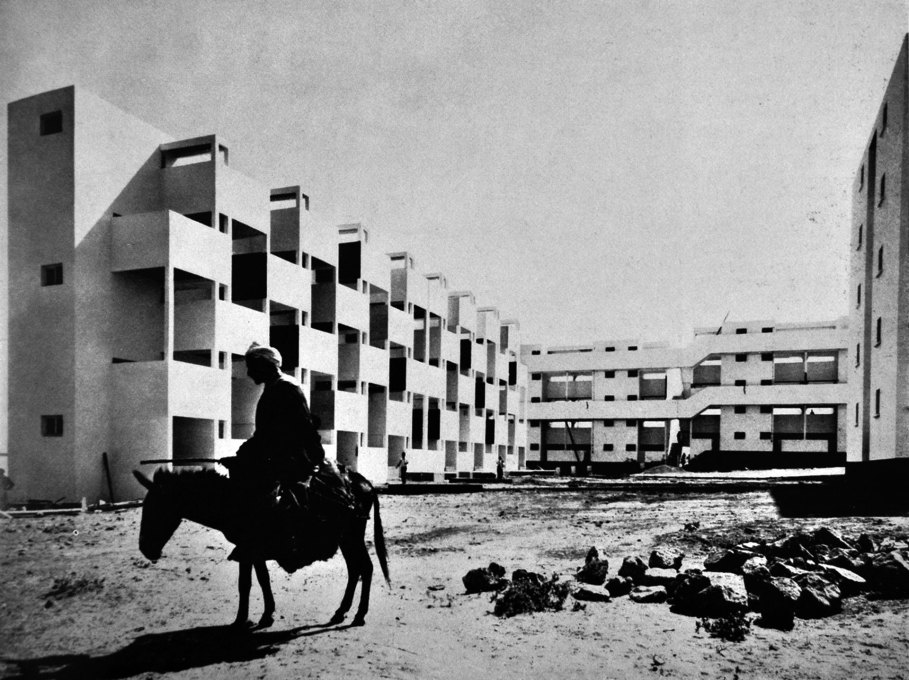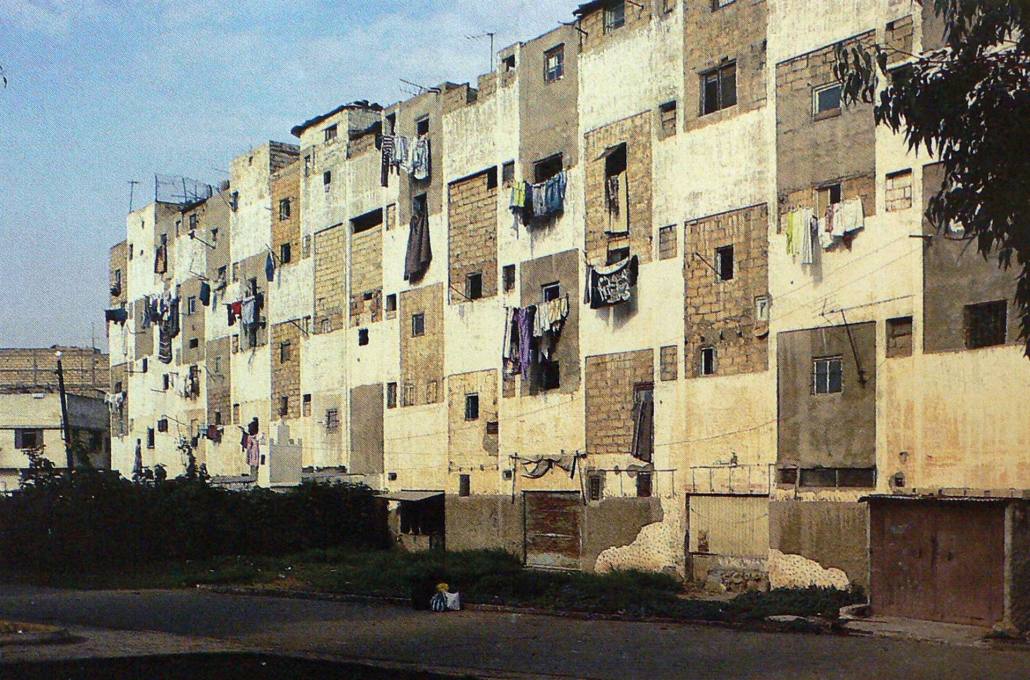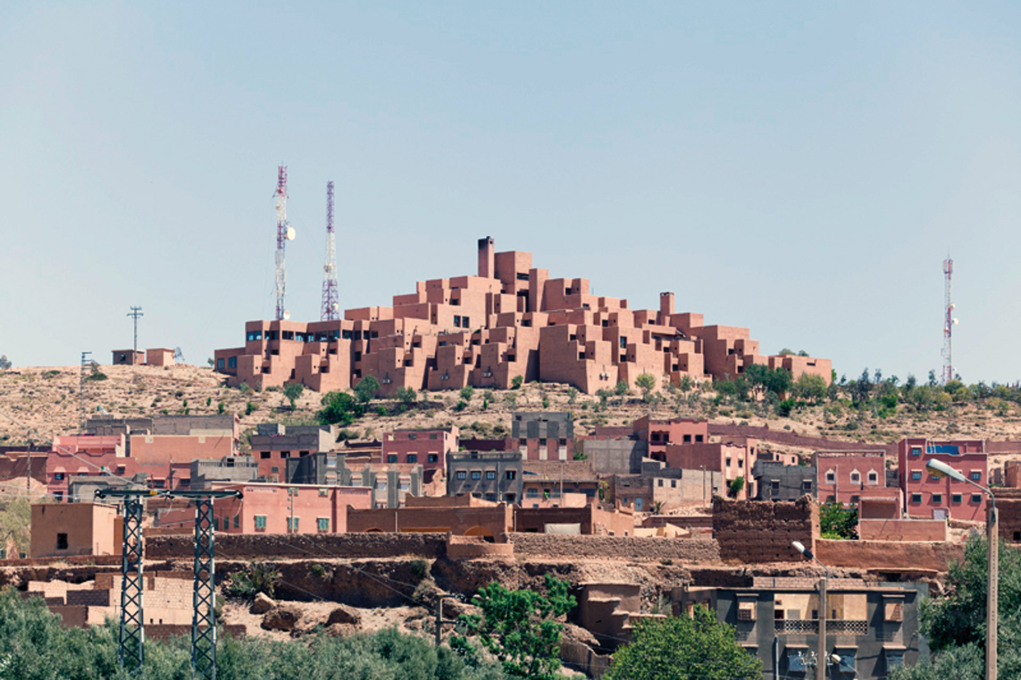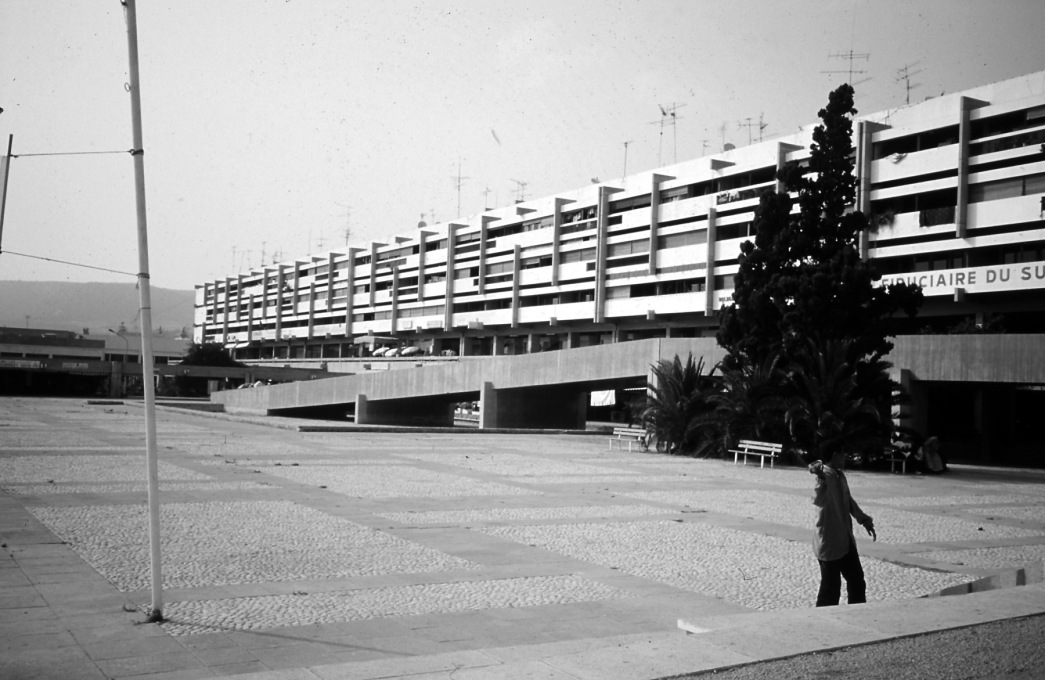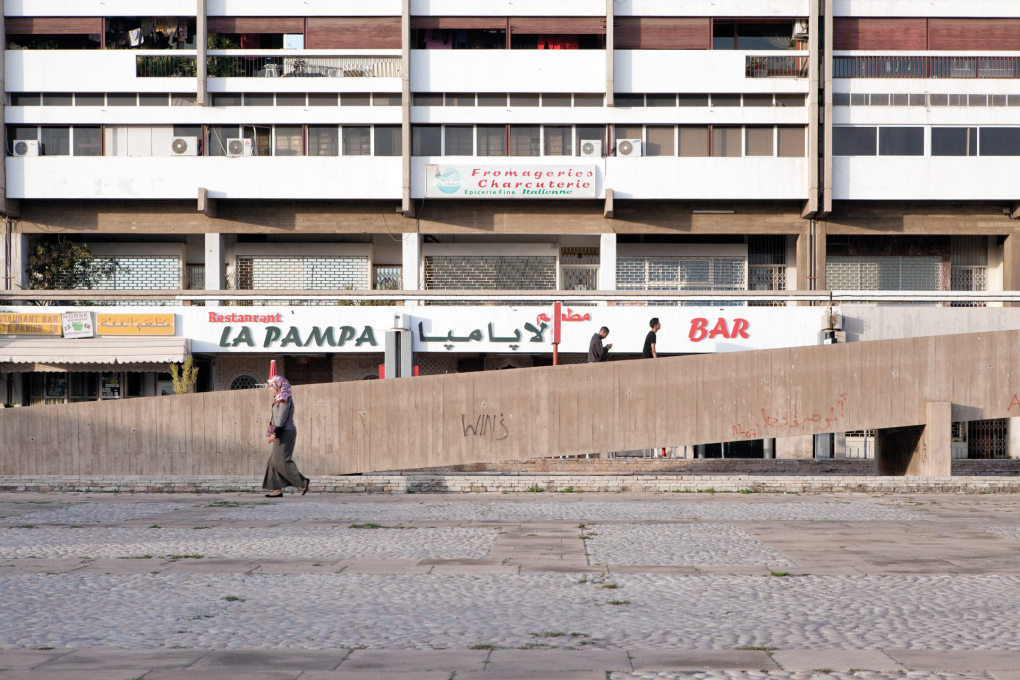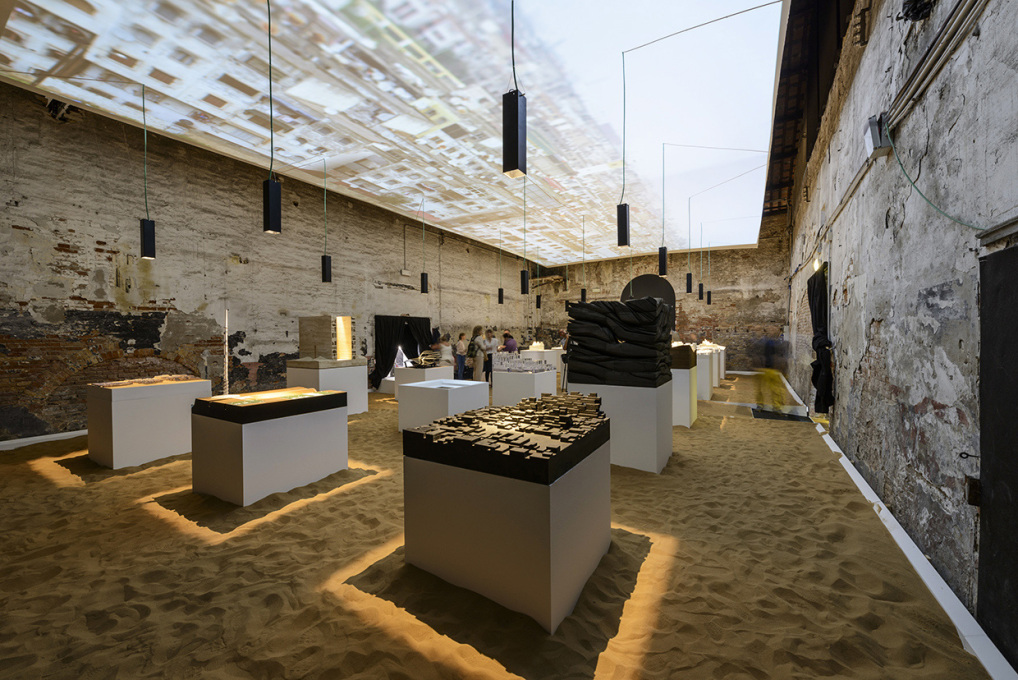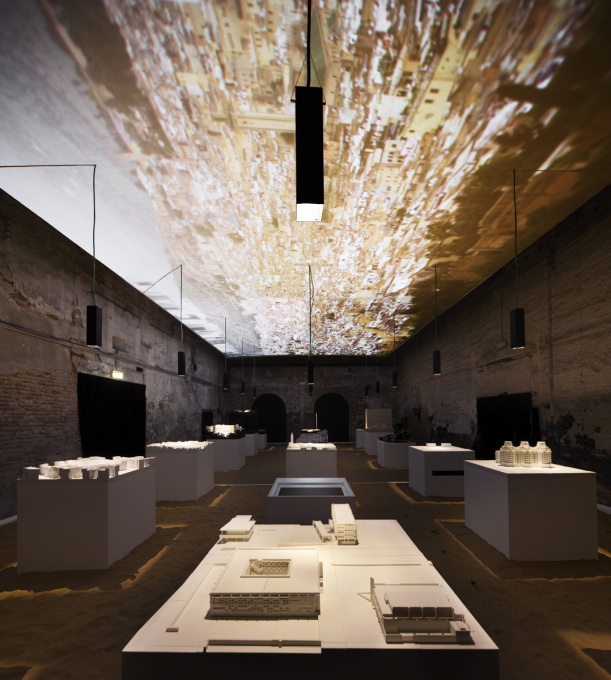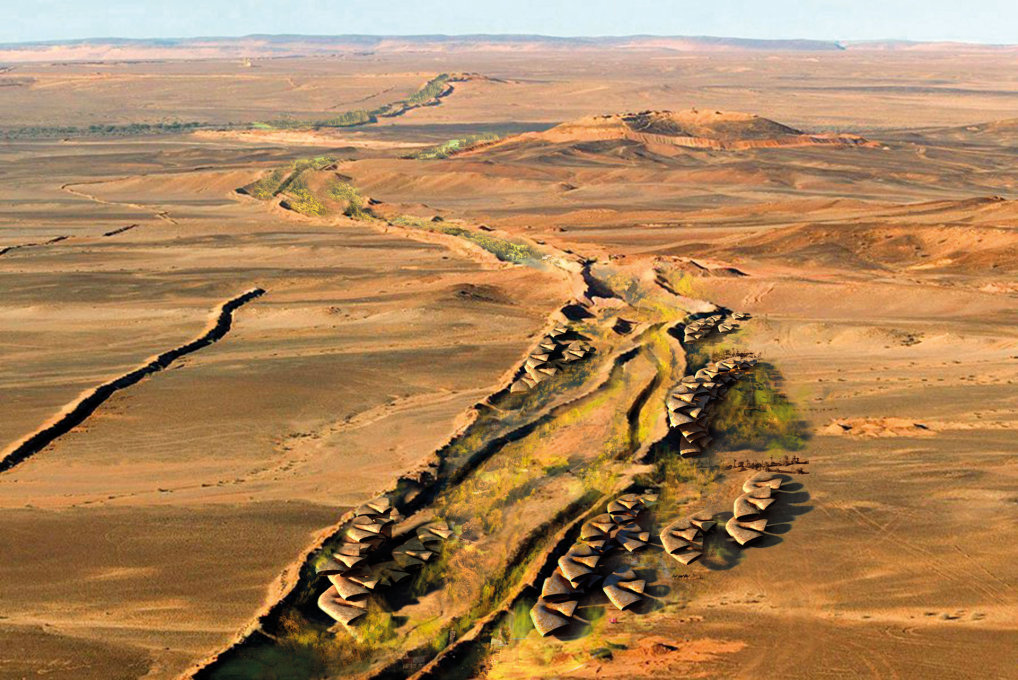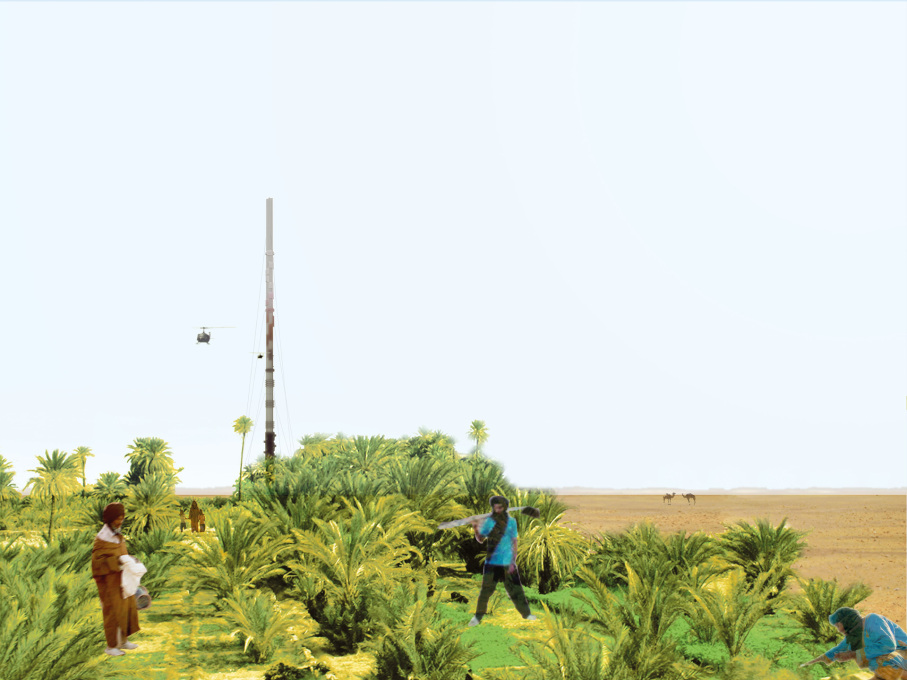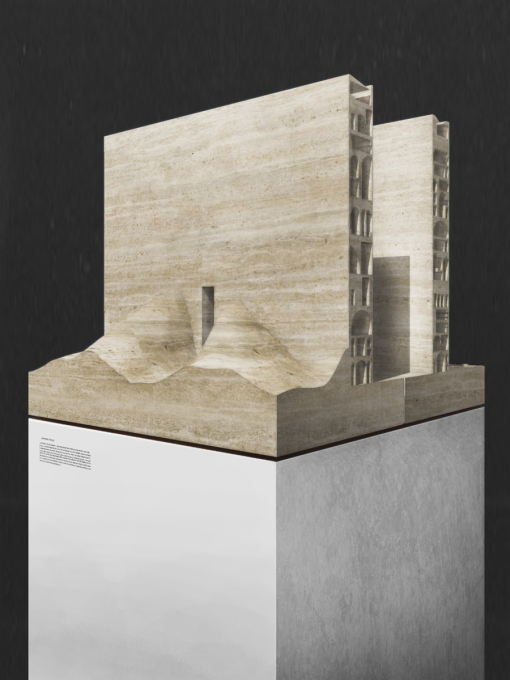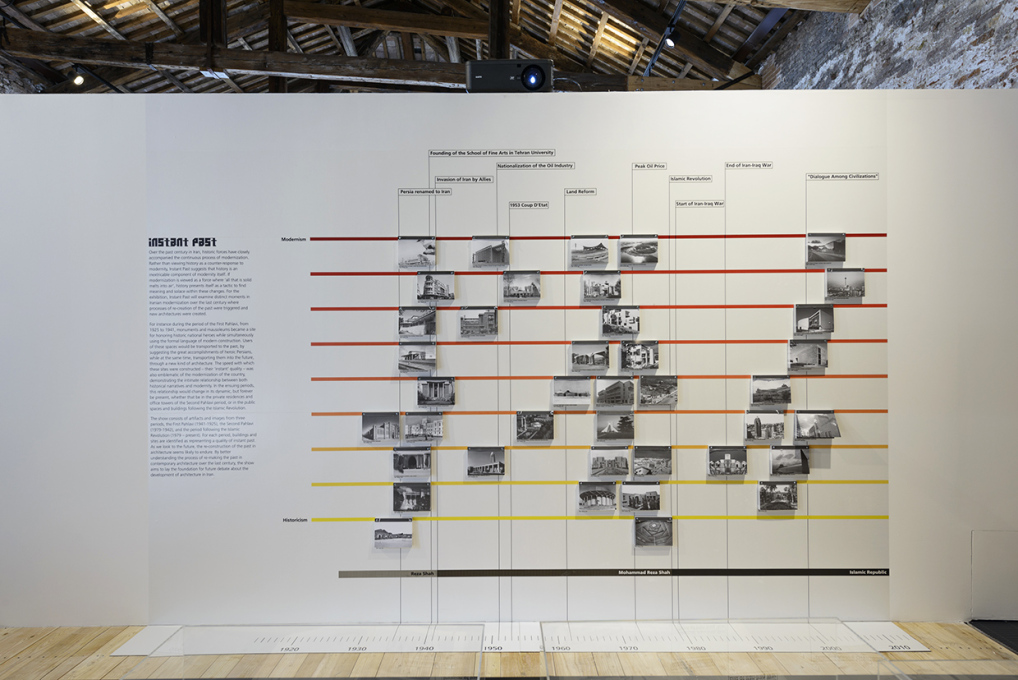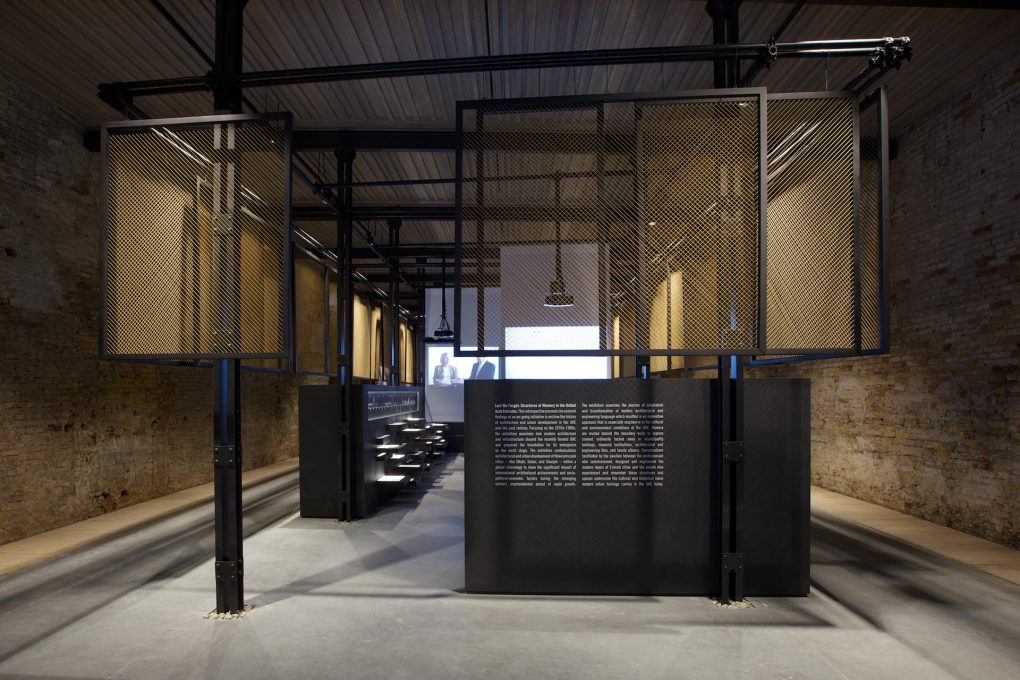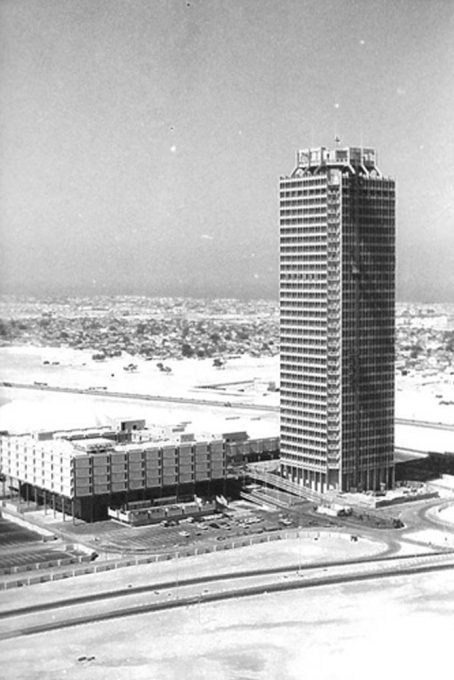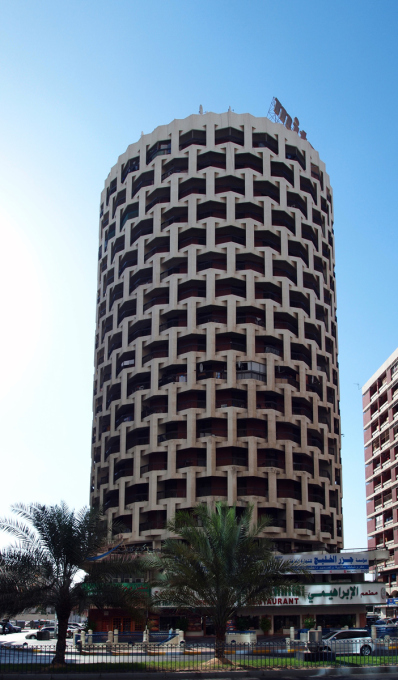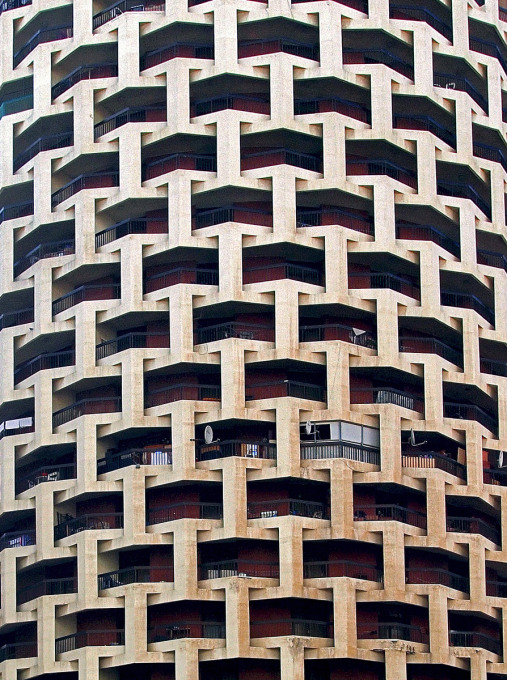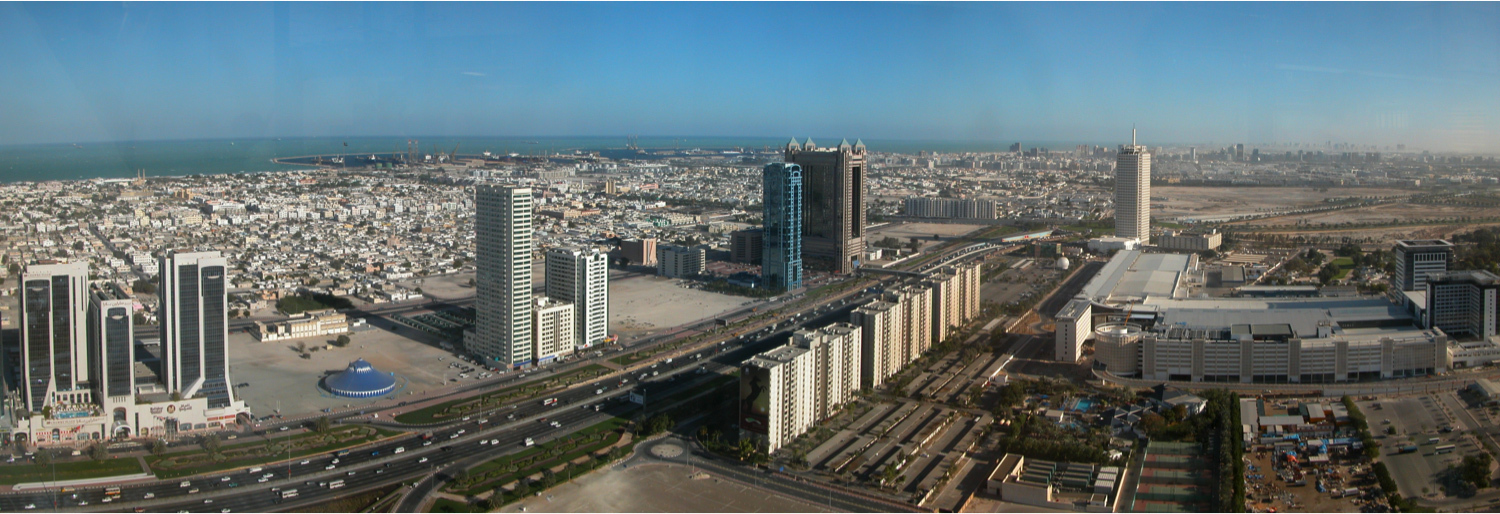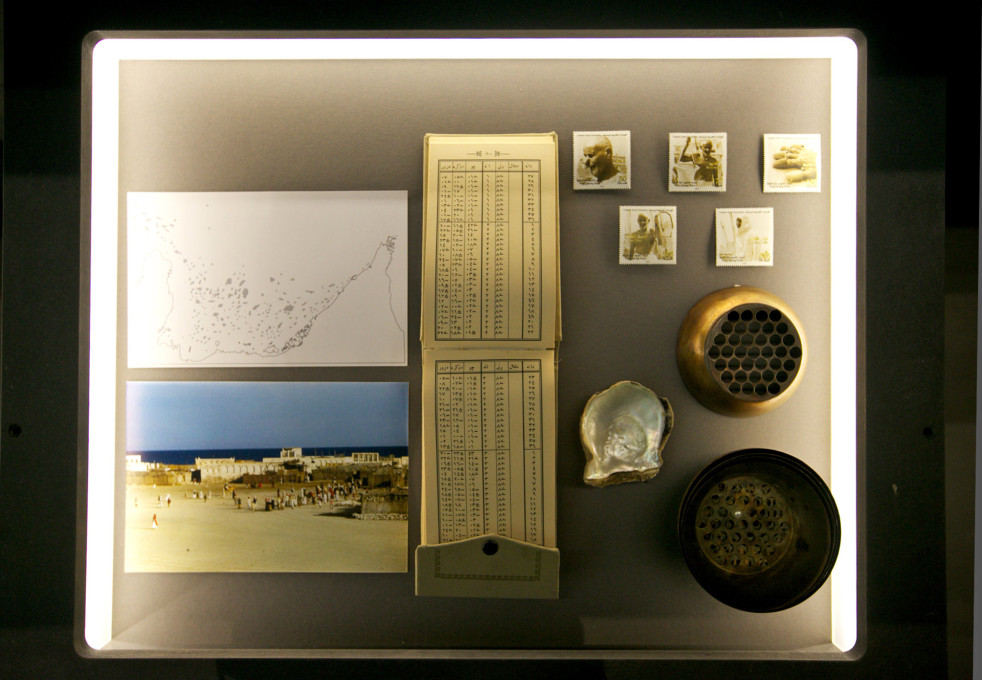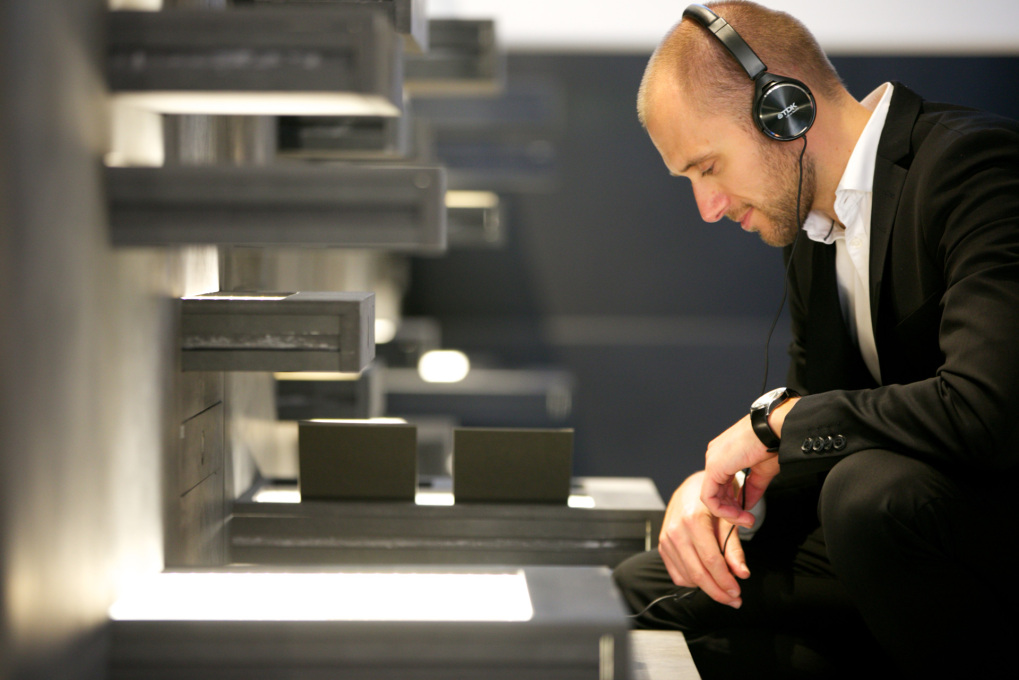Modernist architecture is not just the preserve, as is generally assumed, of countries like Brazil, France, Germany and the UK. One of the best aspects of the theme of this year’s Venice Architecture Biennale is how it has encouraged so many countries to dig through their 20th century architecture treasure chests and share so many little-known modernist gems. The national contributions of Iran, the United Arab Emirates and Morocco – the latter contributing to the Biennale for the first time – dealt with similar topics, but in very different ways. Circling around the “Absorbing Modernity” theme from Koolhaas, all three countries reflect on the relationships of modernity to memory, and history to identity, creating a range of perspectives on the years when modern architecture first kicked in – and how it has since aged under specific cultural and climatic conditions.
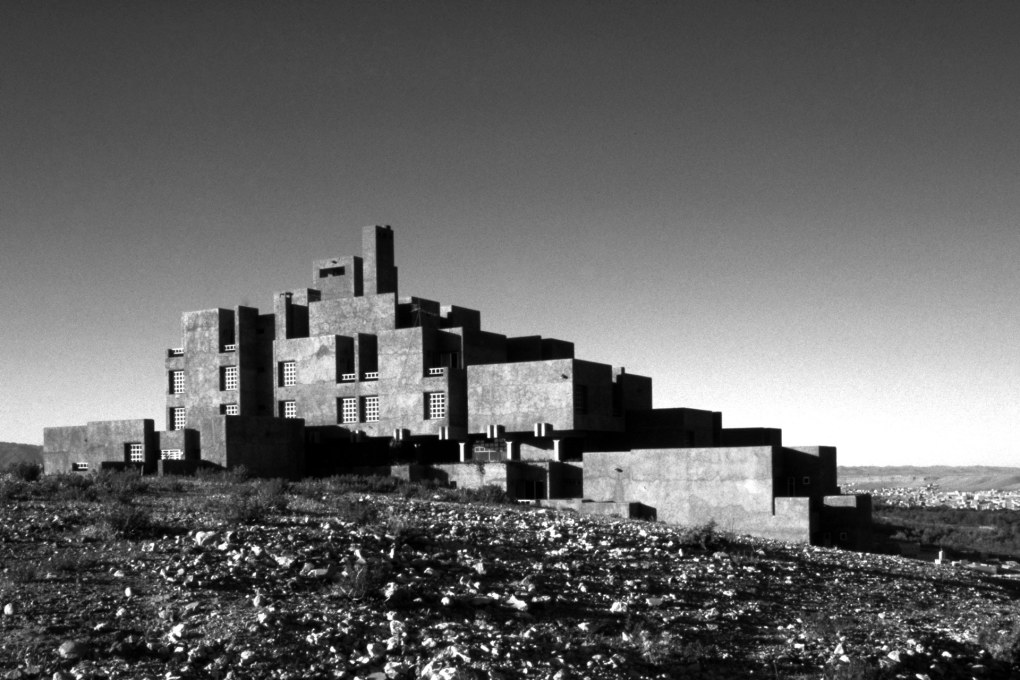
Morocco: Fundamental(ism)s
Curator: Tarik Oualalou
Coming from the bright lights and vaulted ceilings of the Cordiere, this space is dark and rather compact. White models seem to glow on their black steles. Above, the ceiling is lit with a projection of the Saharan sky, or projections of the projects on display, transforming the room into a sequence of “days” and “nights”. You can wander around the models, yet nothing really explains them. And the sand on which you walk (which was, says the curator, imported directly from the Sahara) doesn't really help you either. You have to take the little booklet that comes with the exhibition to really get into this great contribution. Its curator, Paris-based architect Tarik Oualalou, claims that throughout the 20th century Morocco was a laboratory of modernity; one which generated a certain radicality in its buildings and structures because of its specific cultural, climatic, political and social circumstances. Half of the models on show represent projects from the past, from 1914-1984. Of particular note are the fantastic Honeycomb Collective Housing Complex and the Dades Hotel in Boulemane. And it's well worth consulting the booklet to explain how these projects have been transformed by their inhabitants. The other half of the room shows some quite nice models of visions from contemporary architects but – just like the sand on the floor – they beg the question: why did you bring this here?
No, it is the look back at modernism's heritage and how it matured under Morocco’s specific conditions that make this exhibition so compelling. Particularly since the collection also includes the Fez Medina, which with its often white-painted walls and inhabited roof terraces, is a fine example of where modernity has continuously and rather casually been absorbed. The desert region of the country is presented as having been the perfect place for where modernism’s radical ideas didn't appear so radical after all, but rather were naturally merged with many existing local traditions and techniques.
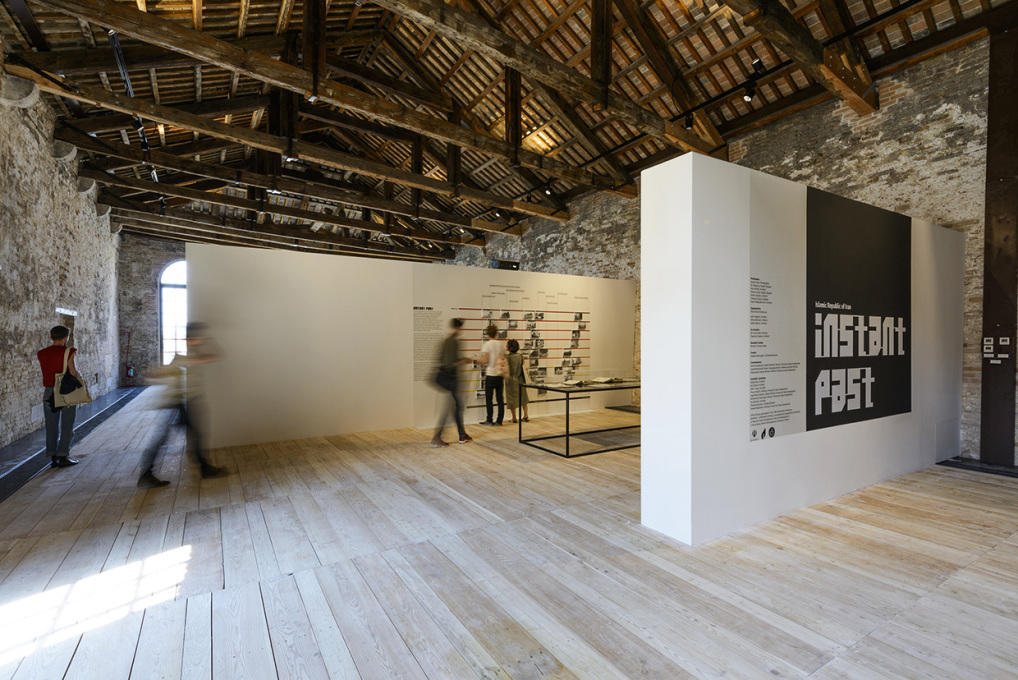
Iran: Instant Past
Curator: Azadeh Mashayekhi
The Iranian contribution is easy to miss: in a smallish room located upstairs in a newly renovated side building at the end of the Cordiere, the Salle d‘Armi, tucked away between Turkey and Costa Rica. Yet it is well worth seeking out. Iranian architect and researcher Azadeh Mashayekhi, based at the TU Delft in the Netherlands, formulates an interesting response to Koolhaas’ topic of “Absorbing Modernity”. “Instant Past” traces how the history of Iran – and an interpretation of Persian identity – was constructed and amalgamated into bold modern buildings throughout the country. Focusing on three key periods in the 20th century, the show demonstrates how creating a specific image of the country’s history has always been part of Iran’s modern architecture – thus also subtly referring to the political circumstances under which these architectures were created.
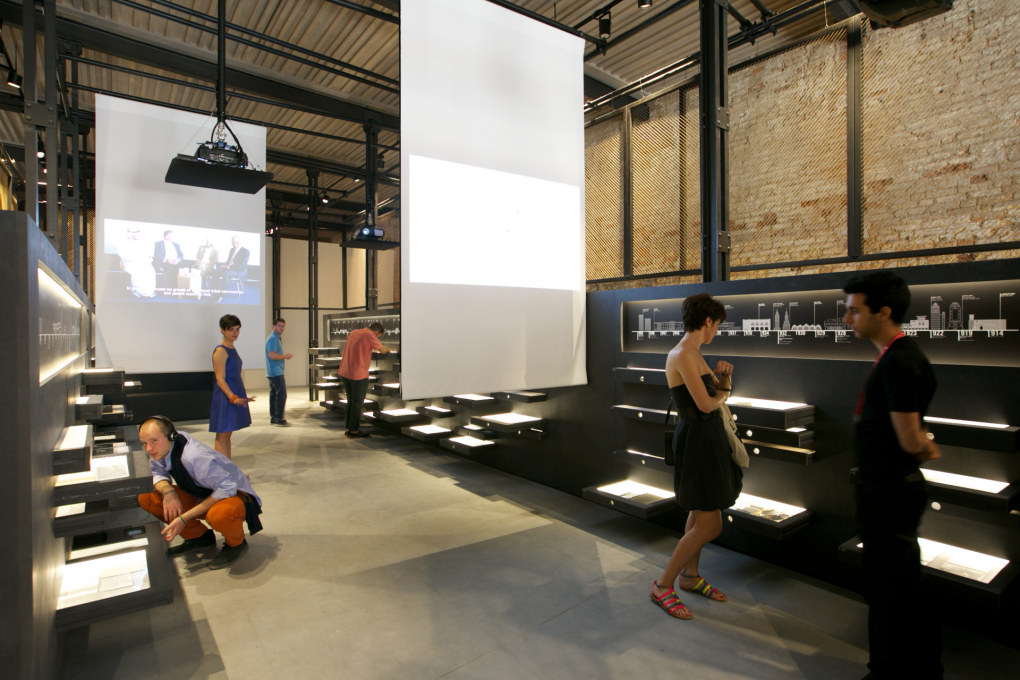
United Arab Emirates: Lest We Forget. Structures of Memory
Curator: Michele Bambling
A little like Iran, the UAE’s exhibition also focuses on how memory and national identity were inscribed in the modern architecture of the region. Embedded in a chronological evolution, the show covers the two decades following the UAE’s foundation in 1971 and the rapid urbanisation which followed. Yet the show, curated by art historian Michele Bambling, also traces the survival of “pre-oil vernacular structures” while at the same time looking at the rise of signature skyscrapers. The simple rectangular box of the display features dozens of black archive drawers. It's well worth rummaging through them all, as they contain wonderful discoveries: not only images, drawings, sketches and little architects' models, but also sound files, postcards, stamps, and photos from Emirati family albums. An accompanying film projected above shows conversations with architects, planners, and “people who experience the modern architecture of the UAE”.
A fascinating pavilion and a wonderful narrative of how modernity came to the desert, the only small criticism being that there’s no place to sit and watch the entire film, whilst meanwhile people around you just keep on opening and closing, opening and closing, drawers...
– Florian Heilmeyer




